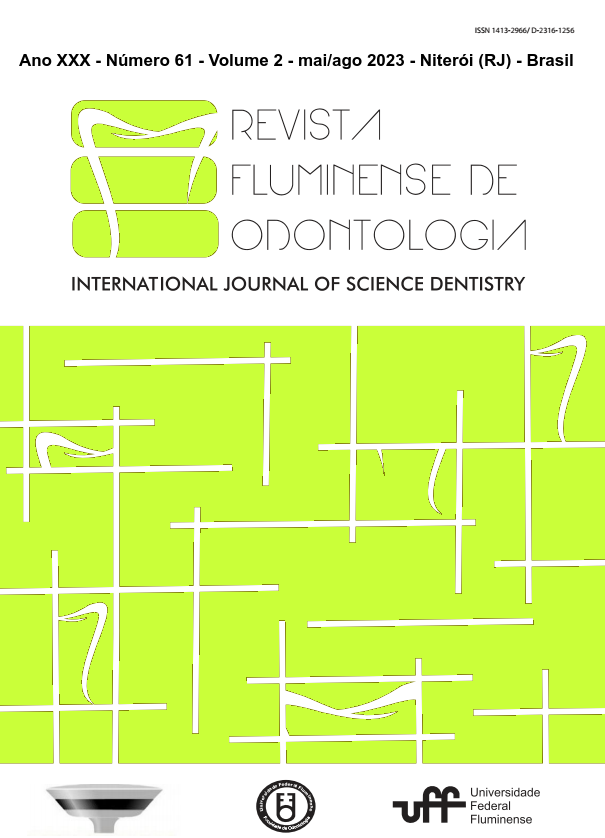Guided surgery in implantodogy: integrative review
DOI:
https://doi.org/10.22409/ijosd.v2i61.56296Abstract
Static guided surgery is characterized by using a surgical guide that aims to reproduce the ideal virtual position of the implant, through sites created for the insertion of a series of drills according to the trajectory pre-established by digital planning. Perform an integrative review of the literature on static guided surgery in implantodontia, demonstrating its importance, advantages, disadvantages, limitations and complications compared to conventional technique. This was an integrative review of the exploratory literature, carried out during the period of August 2021 and May 2022, from the scientific productions indexed in pubmed's electronic database. A total of 13 studies were included after selection and their evidence was gathered to clarify the proposed objects. Studies have shown that one of the main advantages of the static guided technique is accuracy in relation to the conventional technique and better postoperative pain reported by patients. One cannot fully trust the production process of the guides, due to the experience factor is associated, and the cost and time of this production are high. As a complication and limitation, studies mention possibilities of minimal access to the surgical site and fracture of the guide. Guided surgery is an excellent alternative, the most cited advantages are in relation to accuracy, pain reduction, however there are negative factors such as cost, the impossibility of change in the transoperative period and possible manufacturing errors. There are also limitations such as fracture of the guide and low access to the surgical site.
Keywords: Immediate load on dental implant and computer-assisted surgery





